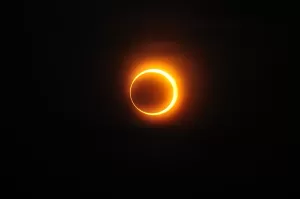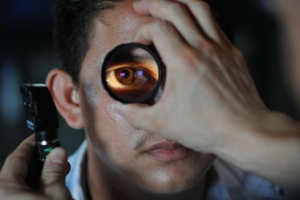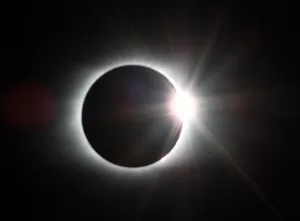As the moon cloaks the sun in a total solar eclipse, the world dims, and the stars peek out in the daytime. Such moments are not just celestial wonders but also present unique opportunities for exploring peculiar phenomena, one of which is the Purkinje effect. This effect, named after the Czech physiologist Jan Evangelista Purkyně, is a quirk of human vision that becomes especially noticeable in low light conditions, such as those created by a total solar eclipse.
Understanding the Purkinje Effect
The Purkinje effect refers to the way our perception of colors shifts as lighting conditions change. In bright light, reds and oranges are vibrant, but as the environment darkens, blues and greens seem more intense. This shift happens because human vision relies on two types of photoreceptor cells: rods, which are more sensitive but don’t detect color, and cones, which detect color but are less sensitive in low light. As light levels drop, rods become more dominant in our vision, leading to a heightened sensitivity to the wavelengths that they can best detect, which are in the blue-green spectrum.
Leveraging a Total Solar Eclipse
A total solar eclipse offers a perfect backdrop to experience and study the Purkinje effect firsthand. As the landscape slips into an eerie twilight, our vision adjusts, and colors begin to shift. This phenomenon provides an excellent practical demonstration of how our eyes adapt to changes in light.
How to Experiment with the Purkinje Effect During an Eclipse
- Wearing Red and Green Clothing: Prepare by wearing clothes of contrasting colors: bright red and vibrant green. As the light diminishes, notice how the perceived brightness and intensity of these colors change. The green should begin to appear more vivid than the red, a reversal of their appearance under full sunlight.
- Observing Colorful Objects: Bring along various colored objects or fabrics. Pay attention to how their colors seem to change in the dimming and then the improving light as the eclipse progresses and recedes.
- Taking Photographs: Capture photographs of the same colorful objects or scenes during different phases of the eclipse. This can provide a visual record of how colors appeared to change due to the Purkinje effect.
- Note Your Observations: Record your observations in a notebook or use a voice recorder. Detailing your experience can not only enrich your understanding but also contribute valuable insights when sharing with others or reflecting on your experience later.
Conclusion
A total solar eclipse is not just a stunning astronomical event; it’s also an extraordinary opportunity to delve into the intricacies of human vision and perception. By engaging in simple experiments, like wearing red and green clothing, we can witness the fascinating Purkinje effect in real-time. Such experiences remind us of the complex and beautiful ways in which we interact with the world around us.






